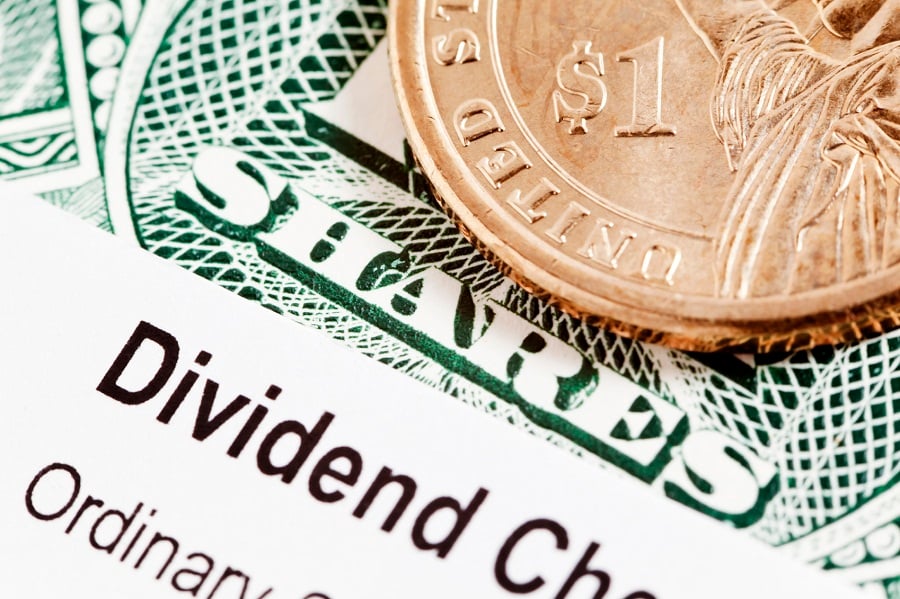Dividend income is increasing from an unlikely source: small companies.
It's a trend that has the potential to throw a wrench into traditional asset allocation models, and even add a performance boost to
dividend-focused mutual funds as smaller companies are added to portfolios typically dominated by larger-company stocks.
A growing number of small-cap companies, historically considered mostly as a source of investment performance, have jumped on the dividend bandwagon.
Today, 324 companies in the S&P 600 SmallCap Index pay a dividend, a 10.2% increase over the start of 2014, according to Howard Silverblatt, senior index analyst at S&P Dow Jones Indexes.
The index-weighted dividend yield is still just 1.34%, because almost half the companies don't yet pay a dividend. But the average yield of the 324 dividend payers is 2.24%, which could start to change the way financial advisers and portfolio managers look at the small-cap space when it comes to income.
By way of comparison, 423 of the companies in the S&P 500 pay a dividend, producing an index yield of 2%.
What makes the trend significant is that
introducing a dividend is not a decision that is taken lightly by corporate boards because once a dividend is in place, investors expect it to stay there, and even increase. Anything else, and investors will take it as a sign of distress, and often head for the hills.
“No one is saying you should now buy small caps as in income strategy, but you are getting something, and it is starting to be significant,” Mr. Silverblatt said. “These companies have opened the door and committed cash flow going forward.”
Aside from being able to take advantage of a stronger U.S. dollar, which benefits companies that import more and export less, Mr. Silverblatt admitted he could not pinpoint anything specific that could be driving the trend.
“A lot of smaller companies have decent cash flow, and the pressure is probably mounting from shareholders to start paying a dividend,” he said.
In analyzing small-cap index data back to 1994, Mr. Silverblatt found that there has been a 22% increase in the number of companies introducing dividends over the 21-year period. Half of that increase, however, has come over the past year.
In stride with the trend toward more small companies introducing dividends, more small-caps that already pay a dividend are increasing their payouts.
Last year, 255 companies in the small-cap index boosted their dividend, up from 139 in 2013.
Through mid-March of this year, another 202 companies in the index have already announced plans to increase their dividends.
MORE THAN GROWTH
Theodore Feight, owner of Creative Financial Design, said the trend could have investors and advisers suddenly considering small-cap stocks for something other than just growth.
“Usually small-cap stocks will lead the way out of a recession, but once you're out, they don't do as well,” he said. “We sold out of our small caps last year after we made about 5%, but we're back to taking a look at a couple of funds now.”
When searching for dividend income in the small cap space, Mr. Feight has used the WisdomTree SmallCap Dividend ETF (DES), which is currently yielding 2.6%. By comparison, the Vanguard Small-Cap Growth ETF (VBK) is yielding 0.96%.
In the actively-managed mutual fund space, small-cap dividend payers would be most likely to show up in value strategies, according to Todd Rosenbluth, director of mutual fund and ETF research at S&P Capital IQ.
He said the small-cap-value fund average yield is 2.5%, but that there are standouts, including the JPMorgan Small Cap Value Fund (PSOAX), which has a 3% dividend yield.
Despite the increased number of dividend payers, small-cap stocks are still rare finds in strategies dedicated to dividends.
The SPDR S&P Dividend ETF (SDY), for example, is made up of companies in the S&P 1500 Index that have a track record of more than 20 years of paying a dividend. Of the 97 names in that fund, only four are small-caps.
But that could change, Mr. Rosenbluth said, as more small companies commit to paying dividends.
“I have no way of proving this, but I think traditional dividend income funds are going to become more likely to include small cap stocks,” he said. “As we see more smaller companies that have attractive yields and that have strong growth prospects, we're going to see small caps appear more often in these dividend-focused funds, and
I think it's inevitable that we'll see some small-cap dividend ETFs.”







